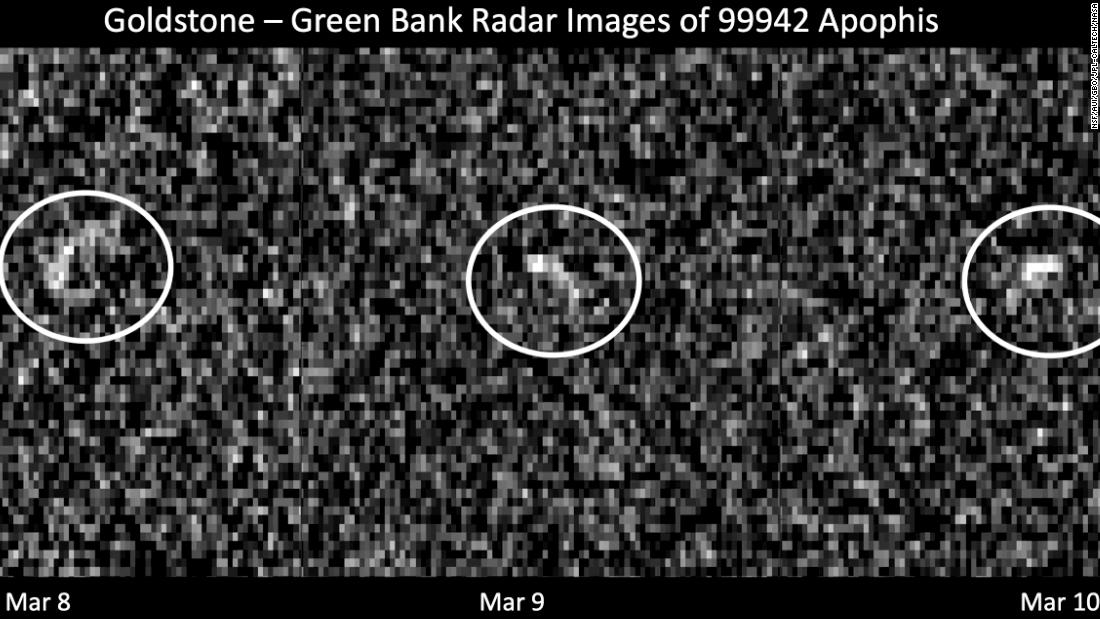
Asteroid 99942 Apophis has been considered one of the most dangerous asteroids with a potential impact on Earth since its discovery in 2004. Now, scientists have revised this opinion after a precise analysis of the asteroid’s orbit.
Earlier predictions noted that the 1,110-meter-wide asteroid could be too close for comfort in 2029, 2036 and could have a slight chance of affecting Earth in 2068.
During that distant flight, astronomers used radar observations to get a better maneuver in the asteroid’s orbit around the sun. Their results allowed them to rule out any risk that the asteroid would impact Earth in 2068. Previous concerns about 2029 and 2036 had already been put aside because of predictions and research.
“A 2068 impact is no longer in the field of possibilities, and our calculations show no risk of impact for at least the next 100 years,” said Davide Farnocchia, a navigation engineer and researcher at NASA’s Center for Near-Earth Object Studies. (CNEOS), in a statement.
“With the support of recent optical observations and additional radar observations, uncertainty in Apophis’ orbit has plummeted from hundreds of kilometers to just a handful of kilometers when it was projected to 2029,” Farnocchia said. “This much improved knowledge of its position in 2029 provides more certainty about its future move, so we can now remove Apophis from the list of risks.”
The CNEOS center maintains a list of risks, tracking asteroids with orbits that bring them closer to Earth – close enough to cause concern about a potential impact. Scientists at the center use radar and telescopes to study objects near Earth and to understand the dangers they can present to the planet.
The CNEOS Center is operated by NASA’s Jet Propulsion Laboratory in Pasadena, California.
To observe Apophis and remove it from the list of risks, astronomers used the Goldstone radio antenna of the deep space network near Barstow, California. This vessel is one of three in the world that allow communications with spacecraft in deep space. The scientists also relied on a collaboration with the Green Bank Telescope in West Virginia.
“Although Apophis took a recent close approach to Earth, it was still nearly 10.6 million miles away,” Marina Brozovic, a JPL scientist, said in a statement. “Even so, we were able to gain incredibly accurate information about its distance to an accuracy of about 150 meters. This campaign not only helped us rule out any risk of impact, but prepared us for an opportunity. wonderful science. “
While the images appear blurry, the resolution is quite strong, given that the asteroid was about 17 million miles away, or 44 times the distance between Earth and the moon at that time.
“If we had binoculars as powerful as this radar, we would be able to sit in Los Angeles and read a dinner menu at a restaurant in New York,” Brozovic said.
The data in this observation will help scientists learn more about the shape and rate of rotation of the asteroid. The current belief is that Apophis is in the shape of a peanut.
Even if Apophis poses no risk in the next century, it will meet the Earth’s gravitational field during its flight on April 13, 2029 and pass less than 20,000 miles from the Earth’s surface. It is closer than satellites orbiting the Earth and 10 times closer than the Moon.
Apophis will be visible to the eastern hemisphere with the naked eye, without a telescope or binoculars. And astronomers will have the chance to study the asteroid up close.
“When I started working with asteroids after college, Apophis was the poster child of dangerous asteroids,” Farnocchia said. “There is a certain sense of satisfaction when we see him removed from the list of risks and look forward to the science we could discover as he approaches 2029.”